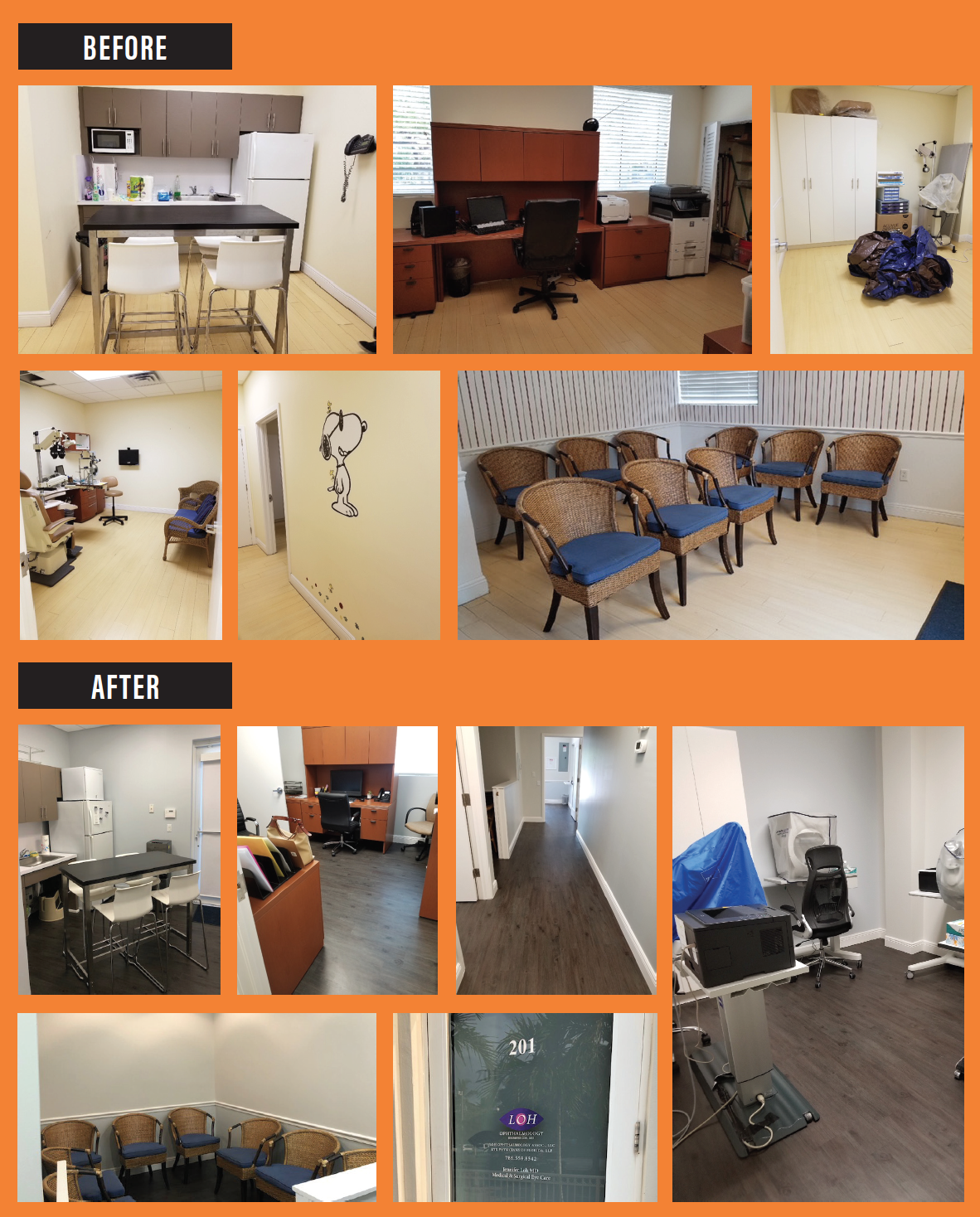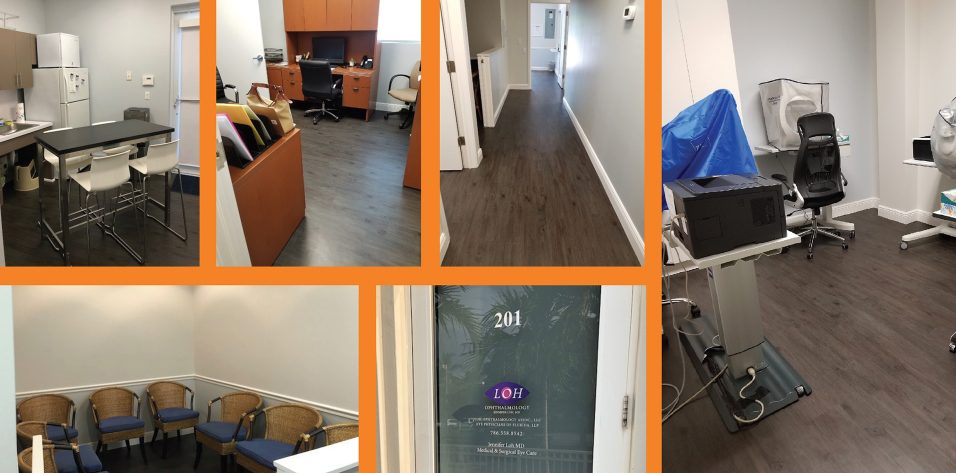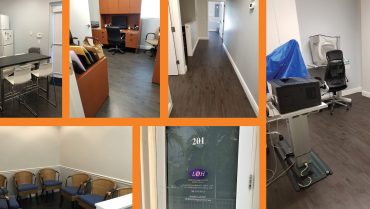
Not long ago, I was struggling with a goal: to work at a practice I love in a city where I want to live. South Florida is great, but it can be a competitive location for an ophthalmologist—especially one recently out of training. I searched for years to find that perfect setup and had been through several different positions in the process, looking for the next step that would enable me to move to Miami. I came across many great opportunities, but each came with a compromise. I just couldn't quite find the right fit.
In 2015, at the MillennialEYE Live meeting in Hollywood, California, I heard a talk by Will Christian, MD. In all of 15 minutes, Will changed my outlook on the path I was about to take. Hearing about his experience going out on his own, I realized something profound: Why should I settle? If there is something I want to do, I should do it. Will’s insights gave me the courage and inspiration to go out on a limb and do something I had long been interested in but was fearful to try—starting my own practice.
Common knowledge had told me that it would be nearly impossible to have my own practice, especially as a solo practitioner. However, keeping in mind Will’s experience and putting my own doubts aside, 2 years ago I opened Loh Ophthalmology Associates.
I originally wrote this article for the January/February 2017 issue of MillennialEYE, detailing some of the key steps I took in my journey to start from scratch. This updated article includes some further thoughts and some new pearls I’ve learned along the way that I think could be useful to other surgeons looking to venture out and start their own practice.
Step No. 1: Get a practice consultant. My first step—which I learned from Will—was to hire a practice consultant. When you are graduating from residency, a common piece of advice you get is to seek the help of a practice consultant, even if you are just accepting a position at an existing practice. However, coming out of training in a less-than-ideal financial situation, many of us, understandably, are likely not inclined to spend money on a consultant.
In the end, I learned that was a mistake. So this time around I decided to do it right and hire a consultant. I worked with BSM Consulting, but there are also many other great practice consultants out there. Consultants can help you look at your choices objectively, identify and ask tough questions about the practice you are joining, and ask tough questions of yourself when you are looking to start your own practice. They can also provide benchmark data and many different metrics you will want to measure along the way.
Step No. 2: Become a leader. As physicians, we are leaders in patient care; however, being a business leader was something I had little to no experience in. I realized that, when I started my own practice, my role as a clinician was quickly going to expand to include the role of an administrator, a manager, and a physician. I wanted to get appropriate education for these new roles, and I found it in the Physician CEO program. This course gave me the ability to look at my role as a physician in a different light and to learn not only how to be a manager but also, more important, how to be a leader. I learned that, if you are going to take on the task of opening your own practice, then you become the representative of the practice. It’s important to take care not only of your patients, but also of your staff, your employees, and your brand. Devoting time and energy to these efforts is great for both professional and personal growth. I highly recommend completing this course or a similar program to fulfill your leadership needs.
Step No. 3: Find your space. There are many options to consider when finding a practice space. You can purchase your own space, rent a space, or even share space with another practice. Regardless of which you choose, you should know the pros and cons as well as the regulations of each. In the beginning, I decided in to go with a concept called space sharing, which involved finding an established ophthalmology office that had some extra time when it was not in use. In my case, I found a retina practice, so I felt that there were mutual benefits both parties could obtain by sharing the space. Also, the practice was already built out. It was a beautiful, established location and would keep my overhead low.
At the time, I thought I had found the perfect solution; however, I learned that there can be drawbacks to space sharing. You can quickly start to outgrow your space and feel that you need more room, but you don't have that option right away. Another piece of advice to heed—and this is relevant no matter what situation you go into—is to check the governmental regulations. I made the mistake of not realizing that there were certain restrictions related to space sharing in the city and township where I was practicing. I had to go through a couple of anxiety-ridden months working with attorneys and the government to obtain a license.
Every situation is unique. Be sure to do some background work before signing a lease or heading down a particular path. Luckily, everything worked out for me in the beginning, and space sharing saved me a lot on overhead and gave me a great place to work while I built the essential foundations of my practice.
After 2 years of space sharing, my practice volume had (luckily) grown to the point where I realized I needed to be able to offer patients appointment availability 5 days a week. At this point, I began looking for my own office space.
After researching many options, such as leasing versus buying, I was fortunate to find an office unit that had been in use as an ophthalmology practice (see Before and After pictures below). The owner was moving and wanted to sell the space, including most of the equipment. Although the prospect of taking on a mortgage and the responsibilities of ownership seemed daunting, I decided that it was the best option for the long-term future of my practice. Moving into the realm of office ownership led me to an addendum to this step, outlined in the accompanying sidebar.
STEP NO. 3A: DEVELOP A RELATIONSHIP WITH A BANK (AND LEARN HOW TO APPLY FOR A LOAN)
For those who are already home or property owners, this step may seem simple. However, if you haven’t ever purchased a property or taken out a loan before, it can seem daunting. It is important to take the time to find a bank that will work with your practice and help you achieve your goals. Luckily, many banks are willing to work with physicians and create packages specific to our needs. It is still important, however, to research and compare the best options. Be prepared to disclose your financial information, including your past 3 years of tax returns. Getting this information together can be time-consuming, but doing so in advance can help make the process smoother and more efficient.
Step No. 4: Create alliances. No man is an island. Small practices are at a bit of a disadvantage in today’s world. Unlike large practices, they don’t have economies of scale. Thus, it may be harder to get on insurance contracts, and small practices may lack the support systems that many larger, established practices have.
I was fortunate in that I found a system that worked well for me. In South Florida, there is a corporation called Eye Physicians of Florida. This is basically an office without borders, wherein 26 ophthalmologists have banded together to create a company. Each retains his or her own individual practice, but they all bill under one tax ID number, and they use their alliances to create economy of scale and build a corporate office. As a doctor and solo practitioner, I could buy in and become a partner—and that is what I did. I feel that I have the best of both worlds: I retained my independence with my own practice, but I was able to jump into being credentialed instantly with insurers and acquire better rates and bargaining power. This type of arrangement may not be available in every area, but it is worth seeking or considering starting up in your area.

It is also important to create good relationships with vendors and contractors. When you manage your own practice, you have regular interactions with vendors and contractors in order to keep up with the daily supply needs and maintenance of your office. Having people you trust and can work with is essential to maintain an efficient workflow with minimal interruptions.
Make sure to get all quotes and business transactions in writing. It is easy to misunderstand phone calls and verbal agreements. Don’t rush, and make sure you agree with all contracts prior to making a commitment. Neglecting to do so can induce anxiety and cost you valuable money and time.
Step No. 5: Find your people and create your culture. Your staff members are your most important allies, so it is crucial to hire the right people. I have been fortunate so far in finding a great staff member who shares my vision, and she works just as hard as I do, if not harder. As the physician CEO, it is up to you to determine your office culture and decide where you want to take your practice. There are many types of markets that you may want to cater to, but finding your market, protecting your brand, and moving your practice in the direction you want is essential. Remember that you are the role model, and all your staff members and patients are looking up to you.
Once you’ve found your team and created your culture, don’t forget to celebrate accomplishments along the way. As a mentor once told me, “A little pizza goes a long way.” Acknowledging the hard work of your staff can help foster a positive team spirit, which ultimately leads to a better environment and care for your patients.
Step No. 6: Expect the unexpected. One key thing I didn’t mention in my original version of this article is how crucial the support of family, friends, and colleagues is in starting a practice. During this journey, there will be many ups and downs, and you will probably feel like you are riding a rollercoaster half (if not all) of the time. Having the support of your key network can help you get through the moments when you question whether you should have started a practice.
Be prepared: You will experience a range of setbacks, from technological difficulties, internet outages, and nonfunctioning phones, to government regulations, human resources management issues, and even inclement weather. Regardless of the bumps sure to pop up along the way, starting your own practice can be an amazing ride.




